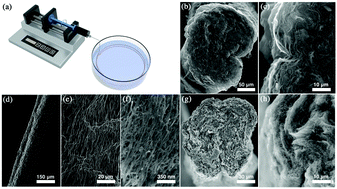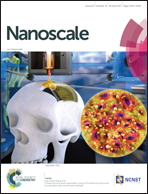High-performance hybrid carbon nanotube fibers for wearable energy storage†
Abstract
Wearable energy storage devices are of practical interest, but few have been commercially exploited. Production of electrodes with extended cycle life, as well as high energy and power densities, coupled with flexibility, remains a challenge. Herein, we have demonstrated the development of a high-performance hybrid carbon nanotube (CNT) fiber-based supercapacitor for the first time using conventional wet-spinning processes. Manganese dioxide (MnO2) nanoflakes were deposited onto the as-prepared CNT fibers by electrodeposition to form highly flexible nanocomposites fibers. As-prepared fibers were characterized by electron microscopy, electrical, mechanical, and electrochemical measurements. It was found that the specific capacitance was over 152 F g−1 (156 F cm−3), which is about 500% higher than the multi-walled carbon nanotube/MnO2 yarn-based supercapacitors. The measured energy density was 14.1 Wh kg−1 at a power density of 202 W kg−1. These values are 232% and 32% higher than the energy density and power density of MWNT/MnO2 yarn-based supercapacitor, respectively. It was found that the cyclic retention ability was more stable, revealing a 16% increase after 10 000 cycles. Such substantial enhancements of key properties of the hybrid material can be associated with the synergy of CNT and MnO2 nanoparticles in the fiber structure. The use of wet-spun hybrid CNT for fiber-based supercapacitors has been demonstrated.



 Please wait while we load your content...
Please wait while we load your content...